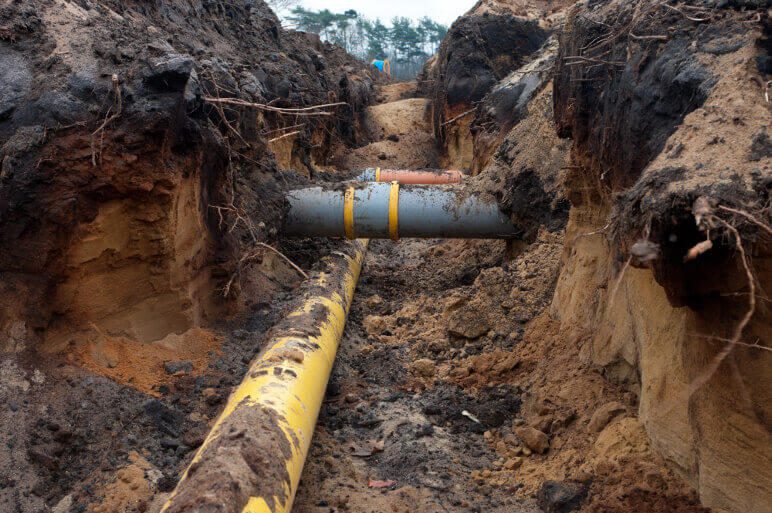
It can be difficult to determine who is responsible for a Seattle sewer line repair. Homeowners often end up paying for plumbing issues that seem to be the city’s problem.
You don’t want to go through the process without being thoroughly informed on what you own, what you’re legally responsible for, and what resources are available to you.
This guide will get you started.
Seattle Sewer Line Responsibilities
Seattle’s residential sewer system consists of the main sewer pipe running under the road with side sewers connecting to it.
The City of Seattle is responsible for the main sewer pipes located underneath the street. The Seattle sewer line includes the main sewer pipes along with their connection points.
The city is responsible for maintaining and repairing the public sewer lines. The city is not responsible for the sewer lines – or side sewers – that bring a private building’s waste to the public sewer.
Your Side Sewer
Side sewers carry a building’s wastewater to the main sewer. All the piping that’s outside a building’s footprint is part of its side sewer system.
The private side sewer system goes up to but doesn’t include the connection (aka tee or wye) to the public sewer main.
Everything up to this point is the property owner’s responsibility.
The Structure of Your Sewers
The side sewer system includes upper and lower lateral sections. The upper lateral section includes the piping from the building to the sidewalk, street, or end of the property line.
The lower lateral section goes from the property line to the main sewer’s connection point. Side sewers are still considered private property even when they extend past the property line.
One building can have multiple side sewer lines. For example, it’s common to have a side sewer going from the basement while another exits the building closer to ground level.
If there are multiple side sewers, the lines can meet together before they enter the main pipe at the connection point. Larger buildings sometimes have multiple connection lines to the main sewer.
Side sewers can be shared by more than one building. When this happens, individual sewer lines will meet in a shared connection line.
Shared sewer lines are owned by the respective property owners, who have combined responsibility for it.
You can see your sewer lines through Seattle’s water and sewer map.
Where is the Sewer Line?
The side sewers that bring waste to the main sewer pipe are sometimes called the sewer line. If your sewer needs repair, you’ll have to know where on the property it’s located.
The sewer line is completely buried.
- Refer to the property’s plat map that includes sewer line blueprints
- Find the sewer cleanout – this is the above-ground pipe with a removable cap that provides direct access to the sewer line
- Look for visible clues such as the sewer cleanout or a manhole cover
- Follow the drainage path from the gutter downspout to the street
- Look for areas with decreasing elevation as this might be where its located
- Check your location on Seattle’s water and sewer map
- Ask a city representative at the SPU Side Sewer Program for help
- Ask a specialty plumber for their assistance
Want more detailed instructions? Check out this article on how to find your sewer line.
What to do if the city isn’t responsible?
Have you confirmed that the city isn’t responsible? This means it’s officially your job to fix. Here’s what you have to do.
- Bring in a sewer repair line company.
- Apply for a side sewer permit.
- Get an inspection done.
- And talk to your neighbors.
Get in touch with a sewer line repair company as soon as you can. Look for one with experience, rapid services, and a stellar reputation.
Seattle requires permits and inspections for any work done to side sewers. You can apply for this online through the Seattle Services Portal.
The permit application process involves submitting plans, describing the intended work, providing sanitary repair information, and including any relevant drainage specifications.
You can schedule an inspection after applying for a permit and submitting plan information. Make sure these applications are complete before doing so.
See why we recommend that you get in touch with a good Seattle sewer repair company? This process can be complicated. But your contractor will be able to guide you through this or take care of getting permits for you.
Finally, it may be a good idea to talk to your neighbors about what’s going on. You may have already done this if there was flooding or leaking sewage. You will have to discuss the repairs with them if the damage is to a shared side sewer or if there’s a dispute around how the problem was caused.
Financial Help for Side Sewer Repair
Seattle has two programs offering financial help to qualifying households: the Home Repair Loan program and the Side Sewer Assistance Program.
Seattle’s Home Repair Loan Program provides affordable loans to homeowners who need to fix health, safety, and structural housing issues. Sewer line repairs are eligible for the program.
All loans are zero interest and start at a minimum of $3,000. Some homeowners may qualify for deferred loans with no monthly payments.
This assistance is available to low- to moderate-income Seattle homeowners living in owner-occupied, single-family homes.
Think you qualify? Your first step is to check Seattle’s current income limits for the Home Repair Program to see if you fall within the eligible threshold.
Homeowners who don’t meet the qualifications can sometimes receive Home Repair Grants. So, it’s still worth contacting them if you fall outside the requirements.
You can request a Home Repair Loan application by calling (206) 684-0244 or emailing . You need to tell them your property address, repair needs, and if you received a letter from Seattle’s Office of Housing.
The Side Sewer Assistance Program is for homeowners who need financial help to fix their side sewers. It provides 0% interest loans to qualifying Seattle homeowners living on the property that needs fixing.
This program has a higher income threshold than the Home Repair Program. You can find the income limits on its website.
You can get an application by calling (206) 684-0244 or emailing .
SPU’s Side Sewer Program: Your Best Resource
You should also know about the Seattle Public Utilities’ (SPU) Side Sewer Program. This program guides homeowners with side sewer problems.
SPU helps homeowners who have questions related to side sewers, information requests, or who simply need assistance in getting through the process. It’s an amazing resource from start to end.
SPU should be your first stop. SPU will help you find out who is responsible for the repairs – you or the city. If SPU does say that you’re responsible, you might want to get a second opinion by having a sewer repair professional do an independent evaluation.
SPU can also help you locate your side sewers. This information is publicly available, but some people find it tricky to use the mapping system.
Neighborly relationships can quickly turn sour. Especially when you have joint responsibility for a shared side sewer in need of costly repairs. Want to skip that difficult conversation? SPU will contact your neighbors for you and let them know about their responsibilities for the shared side sewers.
You can also contact SPU to determine who is responsible for any tree roots that may have damaged your side sewer. This can be hard to find out on your own. SPU has maps and other resources available.
Plus, SPU can provide you with status updates and service information. The Side Sewer team can tell you what a work crew found during an inspection or other service. Along with service request status updates, SPU can go over inspection videos with you and examine where connections were damaged.
This service is invaluable.
Handling sewer line repair needs can be extremely difficult and confusing. Turn to the SPU If you need help or assistance at any time. You can contact them at .
Does Insurance Cover my Sewer Line Repair?
Not usually. Standard home insurance policies won’t cover repairing a sewer line when it fails. However, you may be able to get compensation for some of the damages caused.
Insurance companies consider sewer lines to be “other structures.” If you are covered, compensation is limited and granted under those terms.
Why did the sewer line fail? Was it due to normal wear and tear, neglect, or an accidental “Act of God”? Insurance companies may compensate you for losses caused by a covered cause, such as a tree falling down in a storm or a freak accident.
However, they aren’t going to pay out if the problem was caused due to overgrown tree roots, old pipes, improper maintenance, or sewage backup.
You can get policy endorsements for water and sewer line coverage. Some policies cover sewage damage, while others cover sewer line repair and replacement.
Your current homeowners insurance may have this available. If not, you can get endorsements from niche insurance companies.
Reach out to Dynamic Sewer & Drain for Seattle Sewer Line Replacement
Are you looking for sewer line repair work? We’re here to help.
Dynamic Sewer & Drain provides trenchless sewer line repair and other specialty plumbing services throughout the Seattle, Washington area. 24-hour emergency plumbing services are available.
Send us a message now or call us at 253-205-4098 for a faster reply.






